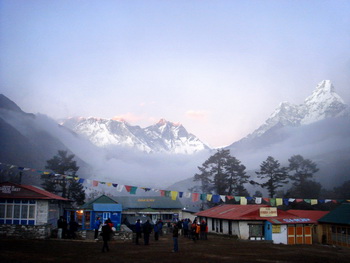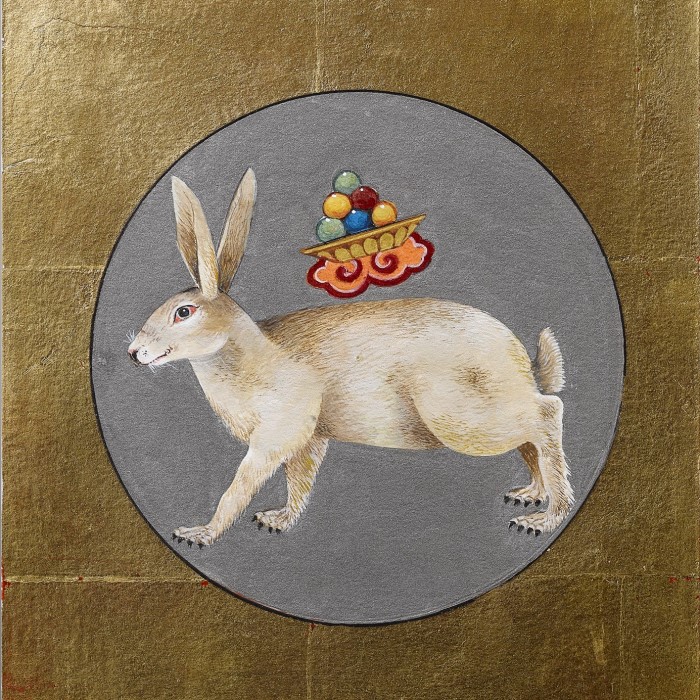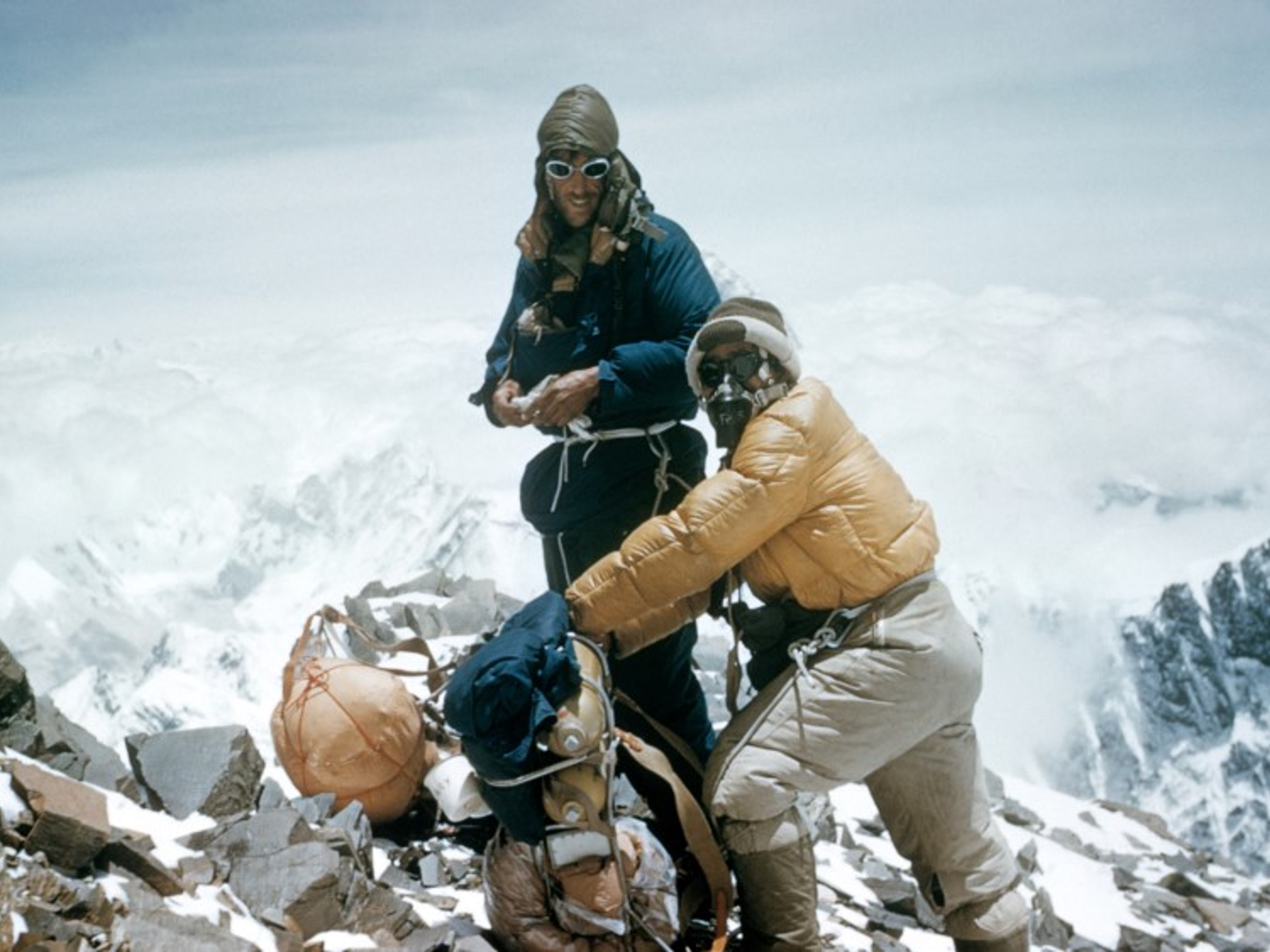Business as usual on Everest

Going through the Khumbu Icefall on Mount Everest is like playing Russian roulette, I am told. Sherpas, who make as many as 40 trips through the treacherous pass per season, know the odds are stacked against them, but for about $32.50 per round trip it’s the best opportunity they have to support their families. The loads they bear up the mountain ensure that the climbers’ energy is conserved and they stand a real chance of making it to the top of the world.
A year ago today, 16 men died in an instant in the Khumbu Icefall. In a single climbing season, 31 children lost their beloved fathers. The face of grief captured on a young Sherpa girl’s face at her father’s funeral—widely circulated in newspapers around the world—was a stark reminder to those who climb that Everest is a deadly business.
In the aftermath it became clear that, in the words of veteran climber Pete Athans, a “referendum on risk” was long overdue. Late last August, 40 mountaineering workers with a range of experiences came together to discuss the issues they face on expeditions. In an industry dominated by the agendas of international climbers and expedition companies, Sherpas are not typically invited to share their opinions. The workers made several recommendations, including more training and the need to reform competitive business practices that encourage cuts in price and safety. For the first time, the troubling inequity of risk—and reward—on Everest was under a global microscope.

In response to the call for crucial change, the Nepali government—which received $3.2 million in fees from Everest climbers in 2014—revealed its indifference towards ordinary Sherpa’s lives: increases in compensation and life insurance coverage were paltry, and the changes they instituted on the mountain insufficient. The real support came from people around the world. AHF and other non-profit organizations coordinated efforts to ensure that widows are getting cost of living stipends and their children are receiving an education. We can’t thank our donors enough for the kindness they have shown.
Today, homes around the Himalaya will mark the one-year death anniversary of their loved ones with Buddhist rituals: clouds of fragrant juniper will hang over villages; butter lamps will be lit; the haunting sounds of long Buddhist horns and cymbals will reverberate across the valleys; and generous offerings will be made.
The 2015 Everest season is well underway now: a parade of over 30 expeditions, each with their own motives and aspirations, are settling into Everest Base Camp. One standout is the expedition to place a player-autographed Premier League soccer ball on the summit. Kantipur Publications touted it as a “truly innovative campaign,” which will “put Nepal and Mount Everest’s name on the world map.”
Meanwhile, the global Sherpa community continues to express dismay at the playground Chomolungma, “Goddess Mother of the World,” has become. How does one explain to a young child that his or her father died on Everest so that an autographed ball could be carried to the summit, all for the bargain price of $32.50? The results of the referendum on risk have come, and those with the power to decide have voted for business as usual.


